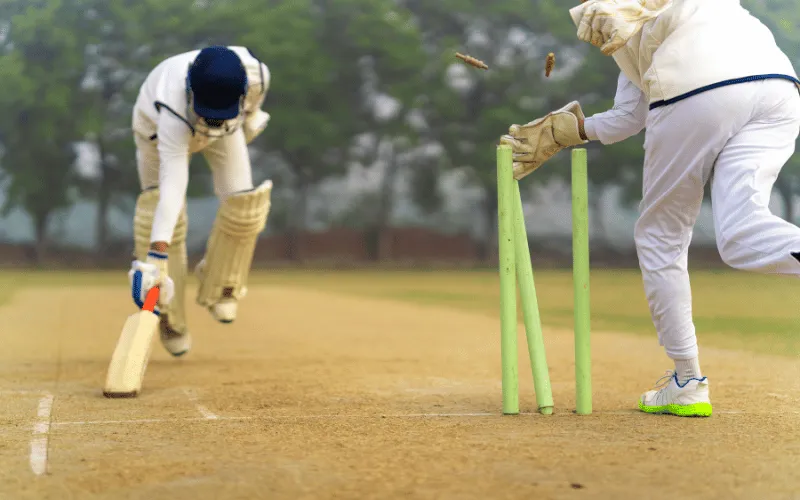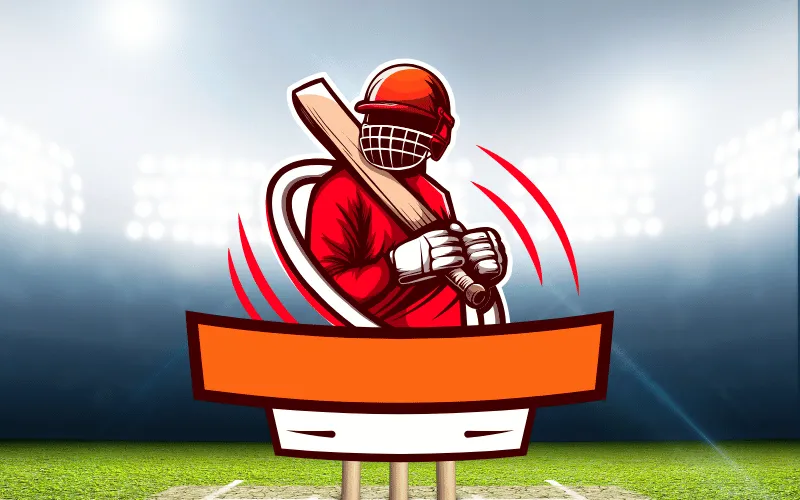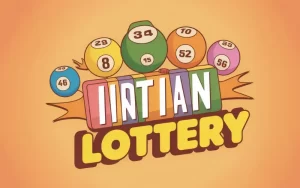In the game of Cricket Wicket, few terms are as central and versatile as the word “wicket.” Whether you’re watching a T20 thriller or a five-day Test match, the word is mentioned again and again. But what exactly is a cricket wicket? Why is it so crucial to the game? Let’s break it down in simple terms.
What is a Cricket Wicket?
In Cricket Wicket, the term wicket has multiple meanings, depending on the context in which it is used. Broadly, it can mean:
- The physical structure: A set of three vertical wooden stumps topped with two horizontal bails.
- The dismissal of a batsman: When a batsman gets out, it’s said that a wicket has fallen.
- The playing surface (pitch): The term “wicket” is also used informally to describe the pitch where the game is played.
The Physical Wicket Structure
Let’s first understand the physical component of the wicket.
Each end of the pitch has one wicket. A cricket wicket consists of:
- Three stumps (each 28 inches high) planted vertically into the ground.
- Two bails (small wooden sticks) placed horizontally across the stumps.
This structure forms the target for bowlers and the defense point for batsmen. If the stumps are hit by the ball and the bails fall off, the batsman is usually declared out (depending on the method of dismissal).
Types of Wickets (Dismissals)
Now let’s explore how a wicket falls in Cricket Wicket. There are several ways a batsman can lose his wicket. Here are the most common:
1. Bowled
If the ball is bowled and hits the stumps, dislodging the bails, the batsman is out bowled.
2. Caught
If the batsman hits the ball and a fielder catches it before it touches the ground, it results in a catch — and the batsman is out.
3. Leg Before Wicket (LBW)
If the ball would have hit the stumps but is blocked by the batsman’s leg or body (without hitting the bat), it’s LBW — provided all the conditions of the law are satisfied.
4. Run Out
If a batsman fails to reach the crease while trying to take a run and the fielding side hits the stumps with the ball, he is run out.
5. Stumped
If the batsman steps out of his crease and misses the ball, and the wicketkeeper breaks the stumps, it’s a stumping.
6. Hit Wicket
If the batsman accidentally knocks over the stumps with his bat or body while playing a shot, it’s called hit wicket.
Importance of Wickets in the Game

Wickets are central to Cricket Wicket because they are the currency of dismissal. The bowling team’s primary goal is to take 10 wickets to end the opposing team’s innings. The batting side, on the other hand, tries to preserve their wickets while scoring runs.
In limited-overs formats like ODIs and T20s, losing too many wickets early can be disastrous. On the flip side, taking quick wickets can completely shift momentum toward the bowling team.
The Role of Wickets in Strategy
Captains and bowlers build their game plans around taking wickets. Here’s how wickets influence strategies:
- Bowling Changes: A bowler who consistently takes wickets will often be given key overs, especially in pressure situations.
- Field Placements: When the team is aggressively hunting for wickets, fielders are placed close to the bat.
- Batting Approach: Batsmen must balance scoring runs with protecting their wicket, especially in Test Cricket Wicket.
Pitch Conditions and Wicket Behavior
As mentioned earlier, the term “wicket” also refers to the pitch. The condition of the wicket influences how the ball behaves:
- A green wicket helps fast bowlers due to extra seam movement.
- A dry, cracked wicket benefits spinners as it offers more turn.
- A flat wicket is good for batting — the ball comes onto the bat nicely.
Curators work hard to prepare wickets that match the desired playing conditions for each format and location.
Iconic Wicket Moments
Cricket Wicket history is full of unforgettable wicket moments:
- Shane Warne’s “Ball of the Century” that bowled Mike Gatting.
- MS Dhoni’s lightning-fast stumping skills.
- Jasprit Bumrah’s toe-crushing yorkers that uproot stumps.
These moments are etched in the minds of fans and show how dramatic a single wicket can be.
Conclusion
Whether it’s the stumps on the pitch, the fall of a batsman, or the condition of the surface, the wicket game lies at the heart of Cricket Wicket. It’s the focal point around which the game revolves — a symbol of both success and downfall. Understanding wickets means understanding cricket itself, and that’s what makes this small piece of wood and action so powerful in the sport.



















